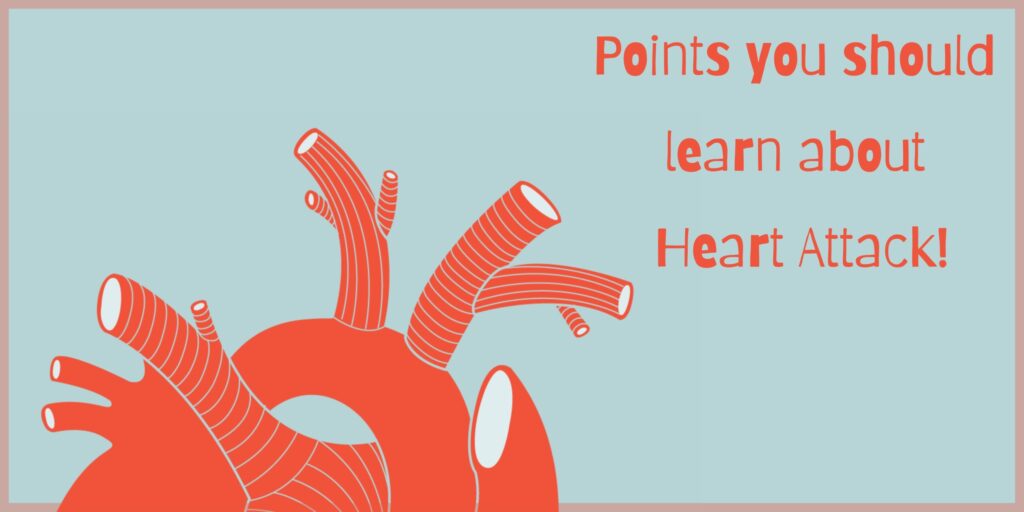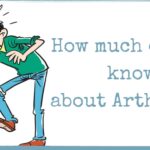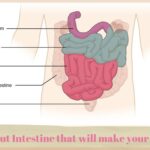Heart attack symptoms
Heart attack symptoms, causes and prevention are elucidated thoroughly in this article. When the blood supply to the heart is cut off, a heart attack, also known as a myocardial infarction, develops. The blockage is usually caused by the deposition of fat, cholesterol, and other elements that create a harmful substance in the coronary arteries, which feed the heart. A plaque can break and generate a clot, obstructing blood flow and the parts of the heart tissue can be damaged or destroyed if blood flow is disrupted. Even though a heart attack can be fatal, therapy has advanced significantly over the years. The longer the heart muscle goes without treatments to regulate blood flow, the more harm it sustains. The most common reason for heart attack is coronary artery disease or CAD and on the other hand, an intense spasm, or violent tightening, of a coronary artery, which can block blood circulation to the heart muscle, is a less common reason.
Symptoms of heart attack
Heart attack symptoms entail pain or discomfort in the chest. Most heart attacks are characterised by pain in the middle or left side of the heart that lasts longer than a few minutes or that disappears and reappears. Inconvenient pressure, fullness, squeezing, or pain are all possible sensations of heart attack, and this condition is characterised by pain or discomfort in the jaw, neck, or back. Among the signs and symptoms of a heart attack are light-headedness, faintness, or weakness, and it is also possible that you’ll break out in a cold sweat. Unusual or unexplainable exhaustion, as well as nausea or vomiting, are further signs of a heart attack, and these other symptoms are more common in women. Not everyone who has a heart attack experiences identical indications or degrees of symptoms. People’s tolerance for pain varies widely; some can tolerate just little discomfort, while others can’t bear it at all. Some persons have no signs or symptoms, and for others, abrupt cardiac arrest may be the first symptom. The larger the number of signals and indications you experience, the more likely you are suffering a heart attack. Although some heart attacks occur unexpectedly, many patients have caution signals and symptoms hours, days, or weeks beforehand. Persistent chest pain or pressure, often known as angina induced by activity and eased by rest, could be the first sign. Angina is a condition in which blood circulation to the heart is temporarily reduced.
Causes of heart attack
Cardiovascular illness and heart attack risk can be increased by various factors, including your fitness, lifestyle, age, and genetic factors. These are referred to as risk factors. High blood pressure, high cholesterol, and smoking are the three primary threat markers for heart disease. Some risk factors, including your age or genetic factors, are uncontrollable. You can, however, take actions to reduce your risk by altering the elements under your control. Heart attack symptoms contain aches in the upper arms or shoulders. Heart disease is caused by high blood pressure, which is a crucial risk factor. It is a medical disorder in which the blood pressure in your arteries and peripheral blood vessels becomes excessively high. It’s possible that high blood pressure will injure your heart and other essential organs like your kidneys and brain if it isn’t properly managed. Cholesterol is a sticky, fat-like molecule produced by the liver and contained in several foods. Your liver produces enough cholesterol to meet your body’s requirements, but we often consume too much cholesterol from the foodstuffs we consume.
Prevention and treatment
If you or someone else starts to show signs of a heart attack, call for help right once. The sooner you go to emergency care, the quicker you can begin therapy to minimise heart muscle impairment. Doctors can do tests to see if a heart attack occurs and choose the best course of action at the hospital. A heart attack may necessitate cardiopulmonary resuscitation (CPR) or an electrical shock to the heart (defibrillation) to get the heart working again. Bystanders who have been trained to perform CPR or use a defibrillator could be able to assist until emergency medical assistance arrives. Remember that the faster emergency treatment begins, the greater your odds of surviving a heart attack. Heart attack symptoms encompass shortness of breath that commonly occurs in conjunction with chest discomfort; however, it can also occur independently of chest discomfort. Following these steps will reduce your risk of experiencing future health problems after a heart attack: Physical activity—Discuss what you do every day in your life and at work with your health care team. If you’ve had a heart attack, you may be advised by your doctor to take a break from work, travel, or sexual activity for a while. In addition to taking prescription medications, lifestyle changes such as consuming a nutritious diet, boosting physical activity, stopping smoking, and regulating stress can enhance your heart condition and quality of life.



